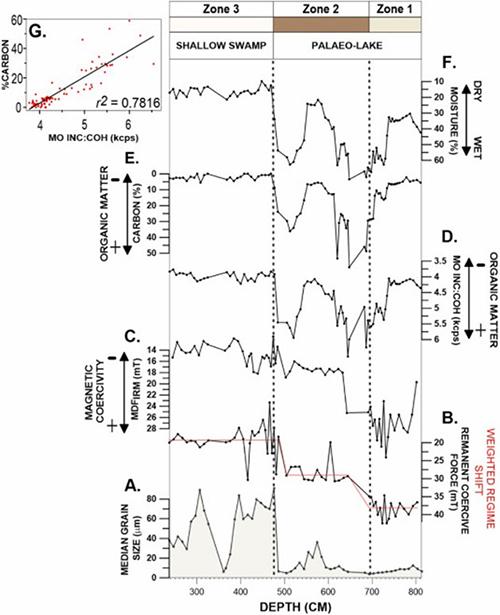Key Points
- The Palawa people's ancient land stewardship techniques have profoundly shaped the landscape of western Lutruwita, within the traditional territories located in Tasmania
- The research highlights the importance of comprehending historical ecological dynamics as a cornerstone for shaping modern approaches to landscape management
- A proxy for organic matter from the Itrax X-ray fluorescence core scanner data was compared with conventional 'loss on ignition' data
Recent studies led by the University of Melbourne have revealed that the Palawa people's ancient land stewardship techniques have profoundly shaped the landscape of western Lutruwita, within the traditional territories located in Tasmania.
With details in an article for Quaternary Science Reviews, the research presents palaeoecological data indicating significant shifts in the vegetation of Tasmania's cool temperate rainforests, correlating with periods prior to and following human settlement.
This research was undertaken with the express consent and support of the Lutruwitan Aboriginal community.
Sarah Cooley, the lead author and a PhD candidate at the University of Melbourne, under the guidance of Prof. Michael-Shawn Fletcher, Theme Leader of Healthy Country at the Indigenous Knowledge Institute, highlighted the research's discovery of marked contrasts in the dynamics of rainforests. These contrasts were observed during the shift from glacial to interglacial periods, a timeline that spans both before and after the initial human settlement estimated to be around 43,000 years ago.
The intentional application of fire to sculpt ecosystems, foster open landscapes, and curb the prevalence of rainforests has shaped vegetation patterns across numerous millennia.
Before Indigenous occupation, lowland rainforests of celery-top pine and myrtle beech dominated the vegetation of western Tasmania, which together comprised around 77% of the pollen types during the previous interglacial period. Pollen grains reflect the natural relative vegetation composition at the time of pollen deposition.
However, there was a shift following human arrival and Indigenous landscape management practices, particularly the use of fire, maintained open landscapes and restricted the expansion of rainforest vegetation to previous interglacial values.
During the transition to the current interglacial period, rainforest trees represented only about 41% of the pollen record, while buttongrass moorland-an indicator of human influence-expanded to cover 10-23% of the landscape.
A diverse array of scientific techniques was applied to the analysis of sediment cores from two locations, Darwin Crater and Lake Selina. The methodologies encompassed radiometric dating, pollen analysis, examination of charcoal records, geochemical analysis, environmental magnetic data assessment, and sedimentary analysis.
The elemental content of nine sediment cores was determined using Micro-X-ray Fluorescence on the Itrax core scanner at ANSTO.

Patricia Gadd, Research Program Manager and Itrax Instrument Scientist, explained that a proxy for organic matter from the Itrax data was compared with conventional loss on ignition data.
Ms. Cooley noted, 'The Holocene era's impact on Tasmania's rainforests was juxtaposed with similar latitudinal landscapes in New Zealand, which experienced later human occupation and a subsequent reversion to former interglacial rainforest extents. This contrast underscores the unique reduction in Tasmanian rainforest coverage during the Holocene, which is likely As put by Indigenous fire management practices.'
The authors emphasised the importance of comprehending historical ecological dynamics as a cornerstone for shaping modern landscape management approaches. This understanding becomes particularly vital in light of the intensifying effects of climate change, which include a rise in both the frequency and severity of bushfires.
By acknowledging and incorporating traditional Indigenous knowledge and practices, modern landscape management approaches can achieve greater effectiveness and sustainability.
Ms Cooley, who is Tasmanian born, completed the research for her Honours thesis with an Australian Institute of Nuclear Science and Engineering (AINSE) grant at the time and is now finalising her PhD.
Collaborating organisations included the University of Nottingham (UK), British Antarctic Survey, and the University of Durham (UK).
Patrcia Gadd has been nominated in several categories, including the CEO Sustained Contribution, at the ANSTO Awards to be held this week.






